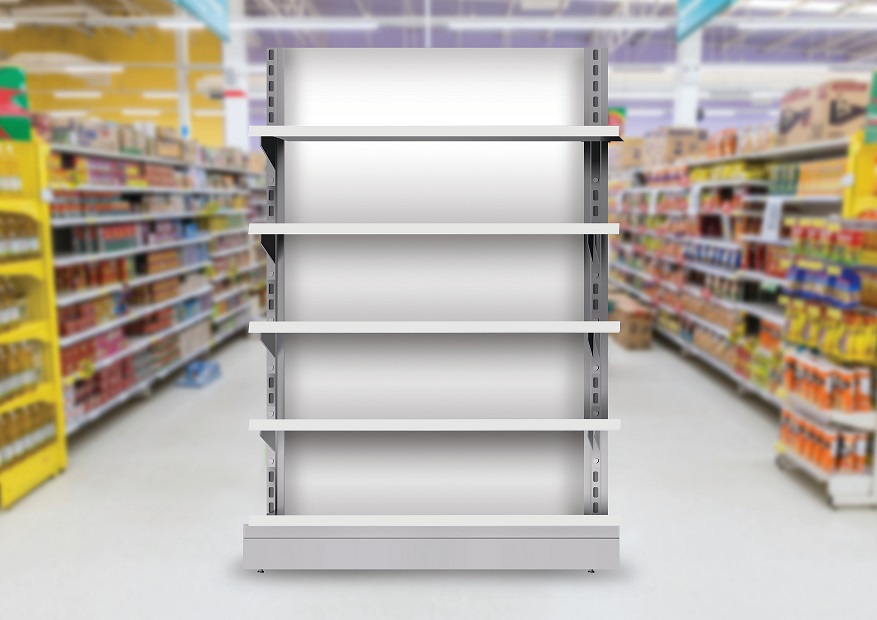Out-of-stocks (OOS) have plagued the retail industry for decades, estimated to cost as much as $150 billion annually in the grocery sector alone. New supply chain challenges driven by the COVID-19 pandemic have further complicated the already delicate balance of keeping the right products on the shelves at the right time. The industry is adjusting, but the problem remains: How much product is too much? And, what if there’s not enough?
When one West Coast supermarket retailer reached out to ReposiTrak to help solve its OOS dilemma, our first order of business was to identify the root cause. Using sales data provided by the retailer, ReposiTrak used a proprietary algorithm to detect inconsistencies and draw conclusions based on trends.
Out-of-Stocks represent a potential sale, a chance for more revenue where a shelf sits empty. Like most retailers, this 150-store chain had a handle on warehouse service levels. That information was readily available and applied to ordering decisions. The OOS opportunity for them, rather, was connected to a group of just over a dozen major DSD vendors. From packaged beverages to breads, frozen to dairy, and several categories in between, these vendors represented a large part of the business and therefore had a large influence over customer experience.
Insight into DSD service levels proved to be a blind spot for the retailer. ReposiTrak was prepared to help, having built relationships with nearly 500 DSD vendors in our more than 20 years in the industry. Together with the retailer and the DSD vendors that had been identified, we were able to collaborate on a method that prioritized the biggest opportunities and provided actionable insights that led to multi-million-dollar reductions in OOS levels.
OOS Impact on the Shopper Experience
Shoppers today have access to more information and more conveniences than ever before. It’s easy to compare price points, pack sizes, and delivery methods online. If the product you want is OOS, chances are there’s another way to get it – fast.
Beyond the lost sale, OOS issues erode shopper experience and brand confidence, which impacts loyalty and future sales. A recent study by Ipsos found that nearly 1 in 5 households with children would change where they primarily bought groceries because of dissatisfaction with inventory, and unsatisfactory substitutions available. If the customer chooses to go elsewhere, it creates a ripple effect that continues to impact your business over time.
Out-of-stocks don’t just cause lost sales, they cause lost customers. To gain back a customer’s loyalty costs both promotional dollars and time. The least expensive way to keep them coming back, however, is by meeting their expectations, having the right product in the right place at the right time.
Action-Driven Collaboration
The retailer recognized that in-stock conditions are an invaluable yet challenging part of the shopper experience. They were determined to bring the same high standards to these efforts as they do in delivering top quality, fresh foods every day.
Collaboration would be key to success. After all, improving OOS conditions would benefit the retailer and vendors alike. The retailer identified a project champion who bridged the gap with vendors and helped to gain alignment internally. An inclusive working group was established and ReposiTrak led bi-weekly check-in meetings where successes and failures were reported.
The ReposiTrak team ranked performance in several critical areas where action could be taken. Delivery routes and delivery days were examined and recommendations were made according to shopper patterns. Stores were ranked according to OOS level and SKU counts and pack sizes were evaluated to understand what worked best, where. Outside of regular meetings, this information was readily available through dashboards for everyone involved.
By narrowing the focus through data and taking action, numbers started moving in the right direction. As in-stock conditions and sales improved, the retailer and vendors became more closely involved in the project, which led to even better results.
Cause, Effect, and Lasting Change
At the end of the 6-month project, ReposiTrak delivered a detailed summary to the team, revealing an annualized reduction in OOS conditions of 15%. These efforts – including the algorithm-driven insights from ReposiTrak and the engagement of, and actions taken by, the retailer and vendors – resulted in $9 million in savings. In addition, the retailer saw an increase in sales during the same time period of between 7% and 10%.
Through the ReposiTrak OOS Management Solution, other retailers have seen improvement in sales of 3% to 22%, even in declining categories. Real advancements can be made simply by having visibility to insights such as the top and bottom vendors, routes, stores, or even SKUs with the most OOS opportunity. But the work can’t stop there.
OOS management requires ongoing effort. Shopper behavior, product offerings, and delivery routes are in a constant state of fluctuation. The dashboards in ReposiTrak’s OOS Management Solution enable retailers and vendors to identify the largest opportunities for improvement based on sales, vendor, store, and item. Users can also see OOS trends and comparisons to help identify where action is needed.
The key differentiator in any OOS management strategy, however – and especially in a deep-dive effort like this – is the people. Using ReposiTrak’s insights, the retailer and vendors were able to adjust orders, delivery frequency and day-of-week, as well as delivery routes, to enable the maximum in-stock conditions. That work couldn’t have happened without the involvement of an engaged group of people.
Next, the retailer plans to use ReposiTrak’s OOS Management Solution for SKU rationalization exercises and OOS forecasting. ReposiTrak’s suite of solutions enables visibility to store inventory, improved forecasting with demand planning and ordering tools, as well as scan-based trading to help retailers bill vendors based on sales.
Contact our experts today for more information on the ReposiTrak’s OOS Management Solution.

